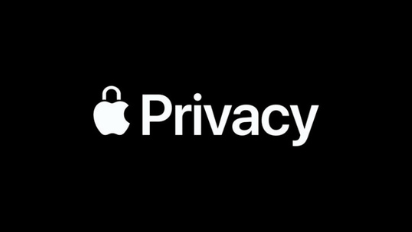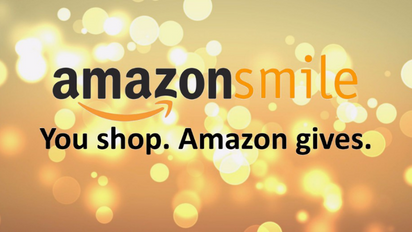The Latest
Throughout 2014, the focus in advertising has been on customer experience, indicating that digital channels have become even more important. So what does that mean for digital marketing come 2015?
According to eMarketer and Morey Group’s National Cultural Attraction Visitor Study, the amount organizations spend on advertising does not correlate with the media that potential visitors are using when deciding to visit a museum, zoo, aquarium, or botanical garden. Additionally, the biggest gap between advertising spending and usage is on the internet, which suggests more cultural attractions should increase their digital presence.
Before 2015 cranks into high gear, we’ve put together the top six digital marketing trends that should be on your radar to help you improve the effectiveness of your advertising, narrow the gap between your spending and usage, and make a greater impact.
- Google Grants will be a critical component of nonprofits’ advertising strategies. A Google Grant allows you access to up to $10,000 a month in free Google AdWords search advertising, making it the most effective way for nonprofits to increase engagement. We recommend using your Google Grant in conjunction with paid search advertising. Your grant is a great channel to test new keywords and ads, which you can then roll out to paid campaigns. In addition, you can use the grant to promote a wide variety of areas on your organization’s website—areas that you may not otherwise promote. This will help drive traffic to your website, which grows your remarketing audience. There are a few limitations to note, though. First, you are limited to a maximum bid of $2.00, so the grant won’t be effective for more expensive keywords. Secondly, your ads only show on Google and not the rest of Google’s search partner sites. While these limitations are important to keep in mind, the benefits far outweigh them. In 2015, we expect to see most nonprofits take full advantage of Google Grants.
- Nonprofits will increasingly utilize new targeting tactics. Over the past few years, advancements in data and ad placements have drastically improved targeting. Third-party data has been a staple of display and video targeting through demand-side platforms for some time. The use of third-party data expanded last year when Facebook partnered with Datalogix to give Facebook advertisers access to third-party customer data. This year, we expect third-party customer data usage to not only increase amongst nonprofits, but for it to be a key component and targeting tactic of their digital advertising strategies. When it comes to ad placement, placing ads on specific websites has been the go-to targeting method. Now, improved targeting mechanisms allow us to target a potential visitor on whatever website they visit. This trend away from “placement” targeting and toward “audience” targeting began a few years ago, but 2015 should be a tipping point for nonprofits.
- Digital advertising will become even more prominent. While CPMs remain low as digital inventory increases (i.e. people are consuming more video, so publishers are producing more video content), 2015 is the year for organizations to heavily invest in digital advertising. Your target audience is increasing the time they spend online, meaning we will have more data to target them. Our proprietary digital advertising coverage model helps define the appropriate amount by looking at your specific available target market and target audience to determine the optimum level of advertising needed to reach that audience effectively. Applying this model on a general level, organizations should spend 25% to 50% of their marketing budget on digital advertising in the new year.
- Video will continue to grow as a vital form of communication. While digital advertising has increased overall, online video in particular has grown by leaps and bounds in just the past few years. It’s an engagement cycle that plays right into marketer’s hands. To meet people’s need and video consumption levels, video publishers produce more video content; people consume more video; marketers gather more data about the customer and the videos they watch; and the cycle continues. Increased content and consumption allow for a wider reach and target audience penetration, leading to more data and better targeting. Given this medium is a perfect stage for compelling creative and has the ability to reach the right audience, it’s a no-brainer that this advertising channel will be a favorite in 2015.
- Agency partnerships will be commonplace. Due to the inevitable high volume of digital advertising, an agency can provide you with less expensive digital advertising buys, email, and analytics than you can likely find on your own. While a lot of organizations would prefer to keep their digital marketing in-house, the reality is that a major way to minimize costs and increase performance is to partner with an agency. Agencies get better rates and maintain a team of experts, which allows for a seamless transition when a staff member departs an organization. Agency partners, specifically those that provide marketing platforms, will ultimately become the norm come 2015 as nonprofits take advantage of low-cost agency rates and platform experts to better further their cause.
- Cyber Week will be an ever-growing portion of business. It used to be Cyber Monday. Come 2012, we ushered in a new era with #GivingTuesday, and since then, Cyber Monday and #GivingTuesday have largely provided successful campaigns for nonprofits. Then in 2013, we saw the potential for expansion of Cyber Monday and Early Bird deals. As a result, Cyber Monday turned into a mildly successful Cyber Week this past year. With the expectation that Cyber Week will only continue to get bigger and customers now having 24/7 access through their mobile devices, a one-day event just doesn’t make sense; they limit your deal to your terms when customers want and need the opportunity to buy or give on their own schedule. In 2015, we expect to see Cyber Week be a pinnacle of nonprofits’ business.
Looking for more information?
For more information about how to optimize your digital marketing strategy, contact us at info@thelukenscompany.com.





